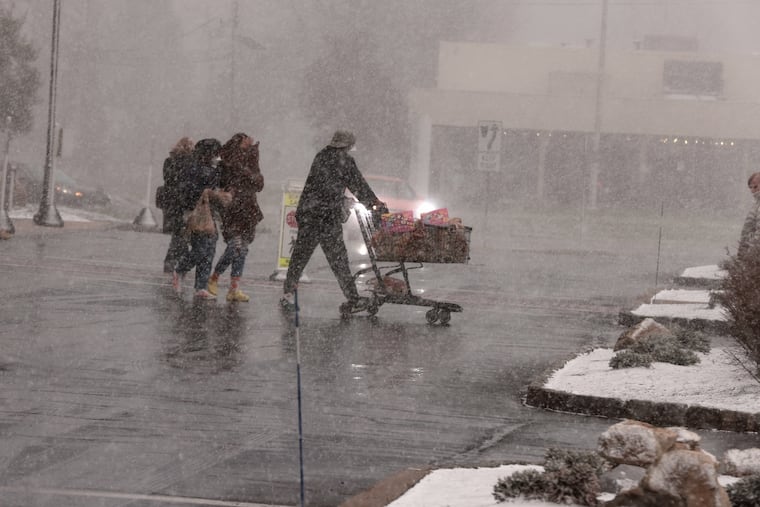Here’s what made that snow squall in central Pennsylvania so deadly
Multiple deaths have been blamed on squall borne of an unusual conspiracy of circumstances.

When the snow stopped, a mere 0.4 inches had fallen, and it was by no means the strongest squall of a day that produced perhaps hundreds of them across Pennsylvania, including several in the Philadelphia region.
But in a matter of minutes, the one that blew up shortly after 10:30 a.m. Monday along I-81 in Schuylkill County would result in horrific collisions involving as many as 60 vehicles, multiple deaths, 20 or more serious injuries, and a widely circulated social-media video almost too gruesome to view.
Snow squalls are not to be confused with flurries or snow “showers.” They are short-lived, ferocious mini-blizzards that can reduce visibilities and rapidly cover road surfaces. Think of the difference between a draft seeping through the door on a cold day and the door flying open with a gust of frigid wind.
» READ MORE: Pa.'s inaugural Snow Squall Awareness Week was held in November
Aware of the threat on Monday, PennDot spokesperson Ronald Young said trucks were spreading de-icing material on the interstate every two hours, starting at 8 a.m.
So why was this squall so problematic? Meteorologists cited an unusual alignment of circumstances in an area not well-observed by radar, including ultra-cold air in the upper atmosphere and a dash of moisture from the Great Lakes.
» READ MORE: Yes, the weather has been wild lately.
The winds
“The wind was the worst of it,” said David Martin, veteran meteorologist at the National Weather Service Office in State College, which covers Schuylkill County. He said the snow intensity wasn’t as big a factor as the winds, which were gusting near 50 mph at the State College office (the blizzard threshold is 35 mph). The winds likely created near white-out conditions.
The cold
Temperatures weren’t far from freezing when the squalls hit the Philly region in the afternoon, but they were in the upper teens to low 20s near the accident scene, Martin said. Snow was able to quickly layer the highway.
Timing
The late-March sun had been up only a few hours and didn’t have time to warm a road surface that was unusually cold, said Paul Walker, senior meteorologist at Accu-Weather Inc.
Lake Erie
While the air was about as dry as it would be on a crisp, blue-sky day in January, moisture from Lake Erie, borne on those strong winds, likely added some raw material for the squalls, Martin said.
Polar vortex
Temperatures in the upper atmosphere, 5,000 to 10,000 feet above the surface, were as cold as any all winter, said Martin. Snow forms when warm air rises over cold air. While the air at the surface wasn’t exactly toasty, with a piece of the polar vortex crossing the Northeast, it was still way warmer than what was above it.
(Lack of) warnings
The squall, part of what Martin called an eight-hour siege, blew up a bit sooner than forecasters expected and in advance of the “main event” squalls in the afternoon. The weather service didn’t issue a warning for it. It likely wouldn’t have made much difference: A squall might be so short-lived that it’s over by the time a warning is issued. And the ones on Monday were “small … in and out in a couple of minutes,” he said. “You can’t get a lot of lead time with something like that.”
Radar hole?
It is uncertain whether it was a factor in terms of advance notice, but AccuWeather’s Walker said the accident site is not well-observed by radar. It is on the outer edge of radar ranges, since it is about equidistant from the weather service devices operated by the offices in Mount Holly, State College, and Binghamton, N.Y. Monday’s squalls had low cloud tops, and they might have eluded the radar peripheries.
The human factor
John Blickley, an official with the Schuylkill County emergency management agency, said he was amazed at how many of the vehicles appeared to be maintaining their speeds despite the blizzardlike conditions.
“I think there are some people who are naturally oblivious,” said Pennsylvania State Police Trooper David Beohm.